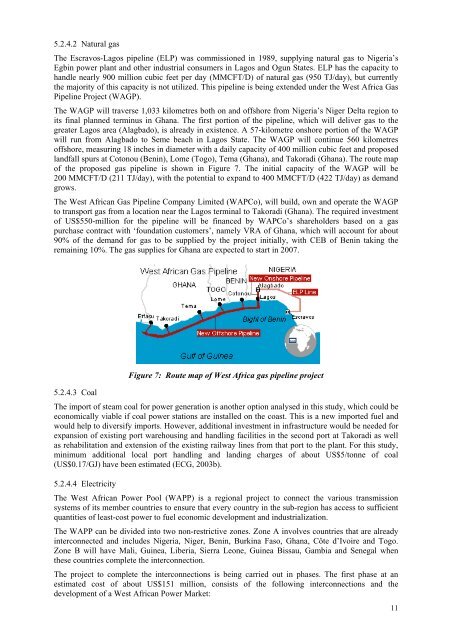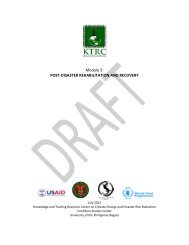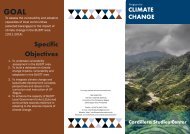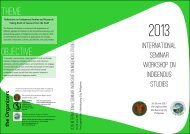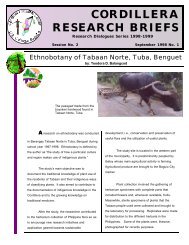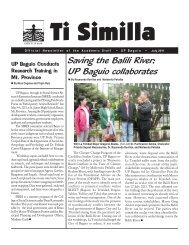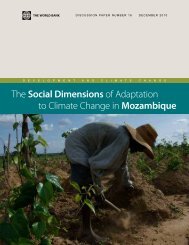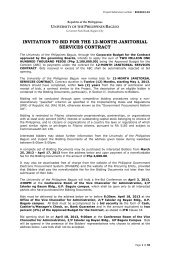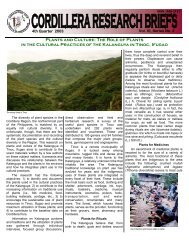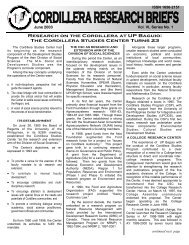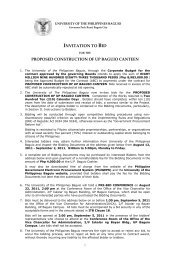Ghana - UNEP
Ghana - UNEP
Ghana - UNEP
- No tags were found...
Create successful ePaper yourself
Turn your PDF publications into a flip-book with our unique Google optimized e-Paper software.
5.2.4.2 Natural gasThe Escravos-Lagos pipeline (ELP) was commissioned in 1989, supplying natural gas to Nigeria’sEgbin power plant and other industrial consumers in Lagos and Ogun States. ELP has the capacity tohandle nearly 900 million cubic feet per day (MMCFT/D) of natural gas (950 TJ/day), but currentlythe majority of this capacity is not utilized. This pipeline is being extended under the West Africa GasPipeline Project (WAGP).The WAGP will traverse 1,033 kilometres both on and offshore from Nigeria’s Niger Delta region toits final planned terminus in <strong>Ghana</strong>. The first portion of the pipeline, which will deliver gas to thegreater Lagos area (Alagbado), is already in existence. A 57-kilometre onshore portion of the WAGPwill run from Alagbado to Seme beach in Lagos State. The WAGP will continue 560 kilometresoffshore, measuring 18 inches in diameter with a daily capacity of 400 million cubic feet and proposedlandfall spurs at Cotonou (Benin), Lome (Togo), Tema (<strong>Ghana</strong>), and Takoradi (<strong>Ghana</strong>). The route mapof the proposed gas pipeline is shown in Figure 7. The initial capacity of the WAGP will be200 MMCFT/D (211 TJ/day), with the potential to expand to 400 MMCFT/D (422 TJ/day) as demandgrows.The West African Gas Pipeline Company Limited (WAPCo), will build, own and operate the WAGPto transport gas from a location near the Lagos terminal to Takoradi (<strong>Ghana</strong>). The required investmentof US$550-million for the pipeline will be financed by WAPCo’s shareholders based on a gaspurchase contract with ‘foundation customers’, namely VRA of <strong>Ghana</strong>, which will account for about90% of the demand for gas to be supplied by the project initially, with CEB of Benin taking theremaining 10%. The gas supplies for <strong>Ghana</strong> are expected to start in 2007.Figure 7: Route map of West Africa gas pipeline project5.2.4.3 CoalThe import of steam coal for power generation is another option analysed in this study, which could beeconomically viable if coal power stations are installed on the coast. This is a new imported fuel andwould help to diversify imports. However, additional investment in infrastructure would be needed forexpansion of existing port warehousing and handling facilities in the second port at Takoradi as wellas rehabilitation and extension of the existing railway lines from that port to the plant. For this study,minimum additional local port handling and landing charges of about US$5/tonne of coal(US$0.17/GJ) have been estimated (ECG, 2003b).5.2.4.4 ElectricityThe West African Power Pool (WAPP) is a regional project to connect the various transmissionsystems of its member countries to ensure that every country in the sub-region has access to sufficientquantities of least-cost power to fuel economic development and industrialization.The WAPP can be divided into two non-restrictive zones. Zone A involves countries that are alreadyinterconnected and includes Nigeria, Niger, Benin, Burkina Faso, <strong>Ghana</strong>, Côte d’Ivoire and Togo.Zone B will have Mali, Guinea, Liberia, Sierra Leone, Guinea Bissau, Gambia and Senegal whenthese countries complete the interconnection.The project to complete the interconnections is being carried out in phases. The first phase at anestimated cost of about US$151 million, consists of the following interconnections and thedevelopment of a West African Power Market:11


